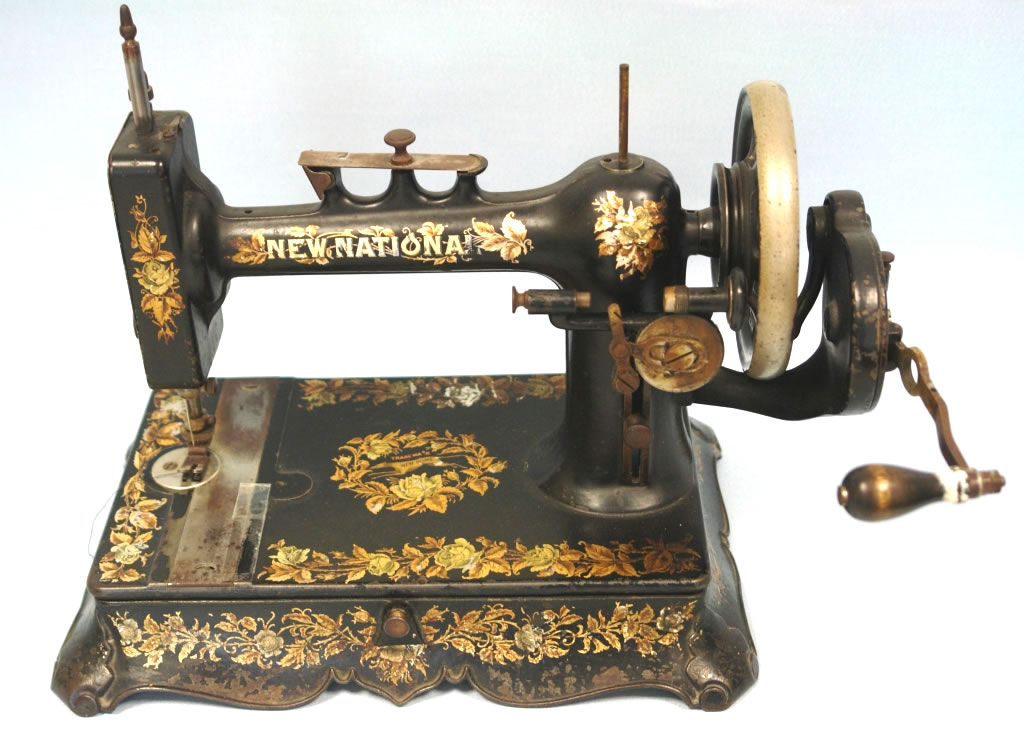A Sewing Machine’s Travels the World
Carted off to Aschaffenburg as a war trophy, sailed to America in an immigrant’s luggage, and arrived in Würzburg in a Care package – this sewing machine’s “biography” reads like a short adventure novel.
Army locomotive engineer Josef Völker from Aschaffenburg had probably “picked it up” as a war trophy in Belgium at the end of World War I in 1918. Yet he had little use for the valuable item back in Germany. Hardship, inflation and unemployment hit large segments of the population in the early 1920s. Many lost everything. And some sought their luck abroad. Three of Josef Völker’s daughters also decided to immigrate to the USA. The first daughter Anna took the sewing machine with her when she embarked on her voyage over the Atlantic in 1921. It constituted the modest “dowry” she later brought with her into her marriage in New York.
Anna’s fourth sister Viola stayed in Germany and moved to Würzburg. Upon receiving the news of Würzburg’s nearly complete destruction at the end of World War II, Anna sent a so-called Care package to her bombed-out sister’s family. The Belgian sewing machine returned to the Main in this package in 1945. Since it was operated manually with a mechanical vibrating shuttle – the power supply in Würzburg had broken down just like the water supply – and needles and thread were also packed in, it could be used right away. Baby clothes as well as the first curtains for the makeshift apartment in the basement of a ruin were sewn on it. “Organized” blue and white checked U.S. Army blankets served as material. The family has kept the sewing machine, which was used until the late 1950s.
Sources/Literature: Memoirs of Heinrich Giesecke, Würzburg.

